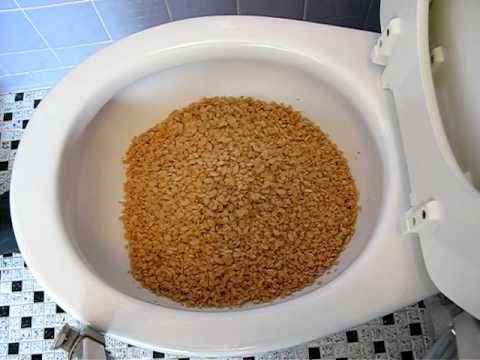Is it Practical to Dispose of Food Down the Toilet?
Is it Practical to Dispose of Food Down the Toilet?
Blog Article
This post down below on the subject of Think Twice Before Flushing Food Down Your Toilet is amazingly attention-grabbing. Give it a try and make your own personal results.

Intro
Many people are frequently confronted with the predicament of what to do with food waste, particularly when it pertains to leftovers or scraps. One usual question that occurs is whether it's alright to flush food down the toilet. In this article, we'll delve into the reasons that people might take into consideration flushing food, the consequences of doing so, and alternate methods for appropriate disposal.
Reasons why people may take into consideration flushing food
Absence of awareness
Some individuals might not know the possible harm caused by purging food down the commode. They may wrongly think that it's a safe practice.
Benefit
Flushing food down the bathroom might look like a quick and simple option to disposing of unwanted scraps, particularly when there's no close-by trash can offered.
Negligence
Sometimes, people may merely pick to flush food out of sheer idleness, without taking into consideration the consequences of their actions.
Consequences of flushing food down the bathroom
Ecological effect
Food waste that winds up in rivers can add to air pollution and injury water ecological communities. In addition, the water made use of to purge food can strain water resources.
Plumbing concerns
Purging food can result in clogged pipelines and drains pipes, causing pricey pipes repair work and inconveniences.
Types of food that need to not be purged
Coarse foods
Foods with coarse textures such as celery or corn husks can obtain tangled in pipelines and cause blockages.
Starchy foods
Starchy foods like pasta and rice can absorb water and swell, leading to clogs in pipes.
Oils and fats
Greasy foods like bacon or food preparation oils need to never ever be purged down the toilet as they can strengthen and create blockages.
Appropriate disposal methods for food waste
Making use of a waste disposal unit
For homes equipped with garbage disposals, food scraps can be ground up and purged via the plumbing system. However, not all foods are suitable for disposal in this way.
Recycling
Particular food product packaging products can be reused, reducing waste and minimizing environmental impact.
Composting
Composting is an environment-friendly method to take care of food waste. Organic materials can be composted and utilized to enrich soil for horticulture.
The relevance of correct waste monitoring
Minimizing environmental harm
Correct waste monitoring practices, such as composting and recycling, help decrease air pollution and protect natural resources for future generations.
Shielding pipes systems
By avoiding the technique of flushing food down the toilet, homeowners can stop costly pipes repairs and preserve the integrity of their plumbing systems.
Final thought
Finally, while it may be appealing to purge food down the toilet for comfort, it's important to comprehend the prospective effects of this action. By adopting appropriate waste monitoring techniques and getting rid of food waste properly, people can add to much healthier pipes systems and a cleaner atmosphere for all.
FLUSH FOOD DOWN THE TOILET?
FLUSHING FOOD CAN CAUSE BLOCKED DRAINS IN YOUR HOME
All of the plumbing fixtures in your home are connected to the same sewer pipe outside of your home. This outdoor sewer pipe is responsible for transporting all the wastewater from your home to the Council sewer mains. Even small pieces of food that go down the kitchen sink can cause problems for your sewer. It should therefore be obvious that flushing larger bits of food, such as meat, risks a clog in either the toilet itself or the sewer pipes. Flushing greasy food is even more problematic because oil coagulates when it cools, coating the interior lining of your pipes.
THE TOILET IS NOT A BIN
Food isn’t the only thing that people shouldn’t be flushing down the toilet. People use the toilet to dispose of all kinds of things such as tampons, makeup wipes, dental floss, kitty litter and even underwear. Water goes to great lengths to educate residents about the high costs and stress placed on wastewater treatment systems simply from people flushing the wrong stuff down the toilet. It costs taxpayers millions of dollars each year, and homeowners thousands in blocked drain repairs.
FLUSHING FOOD IS A WASTE OF WATER
Flushing food is a waste of our most precious resource - water. In June this year Level 1 water restrictions were introduced to protect water supply from drought conditions. Much of New South Wales continues to be affected by prolonged drought with recent figures revealing up to 97 per cent of the state remains in drought. Depending on whether you have a single or dual flush toilet, every single flush uses between five and 11 litres of water. In the current climate this is a huge amount of water to be wasting on flushing food that should be placed in the bin (or better yet, the compost).
https://www.jabplumbingsolutions.com.au/blog/can-you-flush-food-down-the-toilet

Do you really like more info about Is it safe to flush food (especially rice) down the toilet?? Leave a remark further down. We would be happy to hear your responses about this content. Hoping that you visit us again in the future. If you enjoyed reading our blog posting plz remember to share it. I take joy in your readership.
Explore Now Report this page